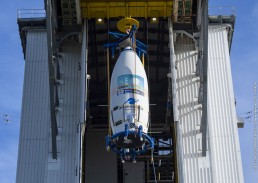August 17, 2021
Pléiades Neo – at the Double!

August 17, 2021
Pléiades Neo – at the Double!



“Pléiades Neo will offer a truly best-in-class capability to our customers and will strongly enhance our position in the very high-resolution market” said François Lombard, Head of Intelligence at Airbus Defense and Space. “The first images from Pléiades Neo 3 are outstanding and confirm that we took the right decision in terms of design and performance to address the increasingly demanding requirements of the geospatial sector.”Comprising four identical satellites, the 100% Airbus manufactured, owned and operated Pléiades Neo constellation offers a native resolution of 30cm with an imaging swath of 14km, the widest in its category. Thanks to their unmatched agility, the constellation will be able to cover the entire Earth landmass five times per year. The new satellites will work hand in hand with the existing Pléiades satellites and the rest of the Airbus dozen-strong Earth observation satellite fleet. The highly innovative design of the Pléiades Neo spacecraft is equipped with the next generation silicon carbide optical instrument, building on the technology that Airbus first pioneered in the early 2000s. The Pléiades Neo constellation will also benefit from laser optical and Ka-band links with the Airbus SpaceDataHighway (EDRS) geostationary satellites to enable urgent acquisitions less than 40 minutes after tasking, to swiftly respond to the most critical situations.
“Pléiades Neo will offer a truly best-in-class capability to our customers and will strongly enhance our position in the very high-resolution market” said François Lombard, Head of Intelligence at Airbus Defense and Space. “The first images from Pléiades Neo 3 are outstanding and confirm that we took the right decision in terms of design and performance to address the increasingly demanding requirements of the geospatial sector.”Comprising four identical satellites, the 100% Airbus manufactured, owned and operated Pléiades Neo constellation offers a native resolution of 30cm with an imaging swath of 14km, the widest in its category. Thanks to their unmatched agility, the constellation will be able to cover the entire Earth landmass five times per year. The new satellites will work hand in hand with the existing Pléiades satellites and the rest of the Airbus dozen-strong Earth observation satellite fleet. The highly innovative design of the Pléiades Neo spacecraft is equipped with the next generation silicon carbide optical instrument, building on the technology that Airbus first pioneered in the early 2000s. The Pléiades Neo constellation will also benefit from laser optical and Ka-band links with the Airbus SpaceDataHighway (EDRS) geostationary satellites to enable urgent acquisitions less than 40 minutes after tasking, to swiftly respond to the most critical situations.